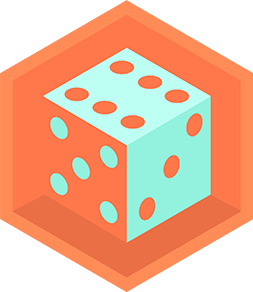Author a game level from scratch
Design and build your own game level using paper, grid maps, and simple rules; draw obstacles, place goals, and playtest to improve your design.



Step-by-step guide to design and build your own paper game level
Everything You Need To Start Making Games (As A Beginner)
Step 1
Gather all the materials from the list so you are ready to build your level.
Step 2
Choose a fun theme for your level like jungle castle space or underwater.
Step 3
Find a flat table or floor space to work on so your paper stays steady.
Step 4
Use the ruler and pencil to draw a grid of squares across your paper for the game board.
Step 5
Mark one square as the Start and one square as the Goal using clear labels or colors.
Step 6
Draw obstacles on some squares such as pits walls or mud that block or slow movement.
Step 7
Draw 2 or 3 special squares and give each a simple symbol such as a star or lightning bolt.
Step 8
Write one short rule beside each special symbol that explains what happens when a player lands there.
Step 9
Write clear movement rules and the win condition in one place so players know how to play.
Step 10
Place tokens on the Start square to represent each player.
Step 11
Play one full test game using the die and your rules to see how the level feels.
Step 12
Pick one change to improve balance or fun and update your map to try again.
Step 13
Share your finished game level on DIY.org so other kids can see and play it.
Final steps
You're almost there! Complete all the steps, bring your creation to life, post it, and conquer the challenge!


Help!?
What can we use if we don't have a ruler, tokens, or a die?
If you don't have a ruler use the straight edge of a book or folded paper to draw the grid, use coins, buttons, or LEGO pieces as tokens on the Start square, and use a coin flip or a spinner app instead of a die to determine movement.
My level felt impossible during the test — what should I change?
If your playtest shows no clear path or players get stuck because obstacles block movement, remove or move some obstacle squares, add at least one shortcut or reduce the die/spinner movement range, then play one full test game again to check balance.
How can I make this activity easier for younger kids or more challenging for older kids?
For younger kids make larger grid squares, fewer obstacles, simpler movement rules, and place tokens for them, while for older kids add more special squares with written effects, multiple goals, and extra rules to increase strategy.
How can we improve or personalize our finished level before sharing it on DIY.org?
Enhance your level by adding themed artwork and 3D props, naming special squares and writing clear one-line rules for their symbols, creating custom power-up cards to accompany tokens, and applying the chosen improvement from your playtest before uploading to DIY.org.
Watch videos on how to design and build your own paper game level
UNITY 6 TUTORIAL PART 1 - LEARN THE BASICS - HOW TO MAKE A GAME FOR BEGINNERS
Facts about game design for kids
✏️ Paper prototyping is a fast, low-cost way designers test level ideas before building them digitally — pros and indies both use it.
🧩 Grid maps (square or hex) make it easy to plan movement, obstacles, and balance when you’re sketching levels on paper.
🛠️ Level editors let players become designers too; games like Super Mario Maker created huge communities of user-made levels.
🧪 Playtesting often reveals surprises—players will try unexpected strategies that show where a level needs tweaking.
🎮 Super Mario Bros. 1‑1 is a legendary example of level design that teaches players the rules without any words or tutorials.
How do I design and build a paper-based game level from scratch?
What materials do I need to create a paper grid map game level?
What ages is designing and building paper game levels suitable for?
What are the benefits of making and playtesting your own paper game level?


One subscription, many ways to play and learn.
Only $6.99 after trial. No credit card required



